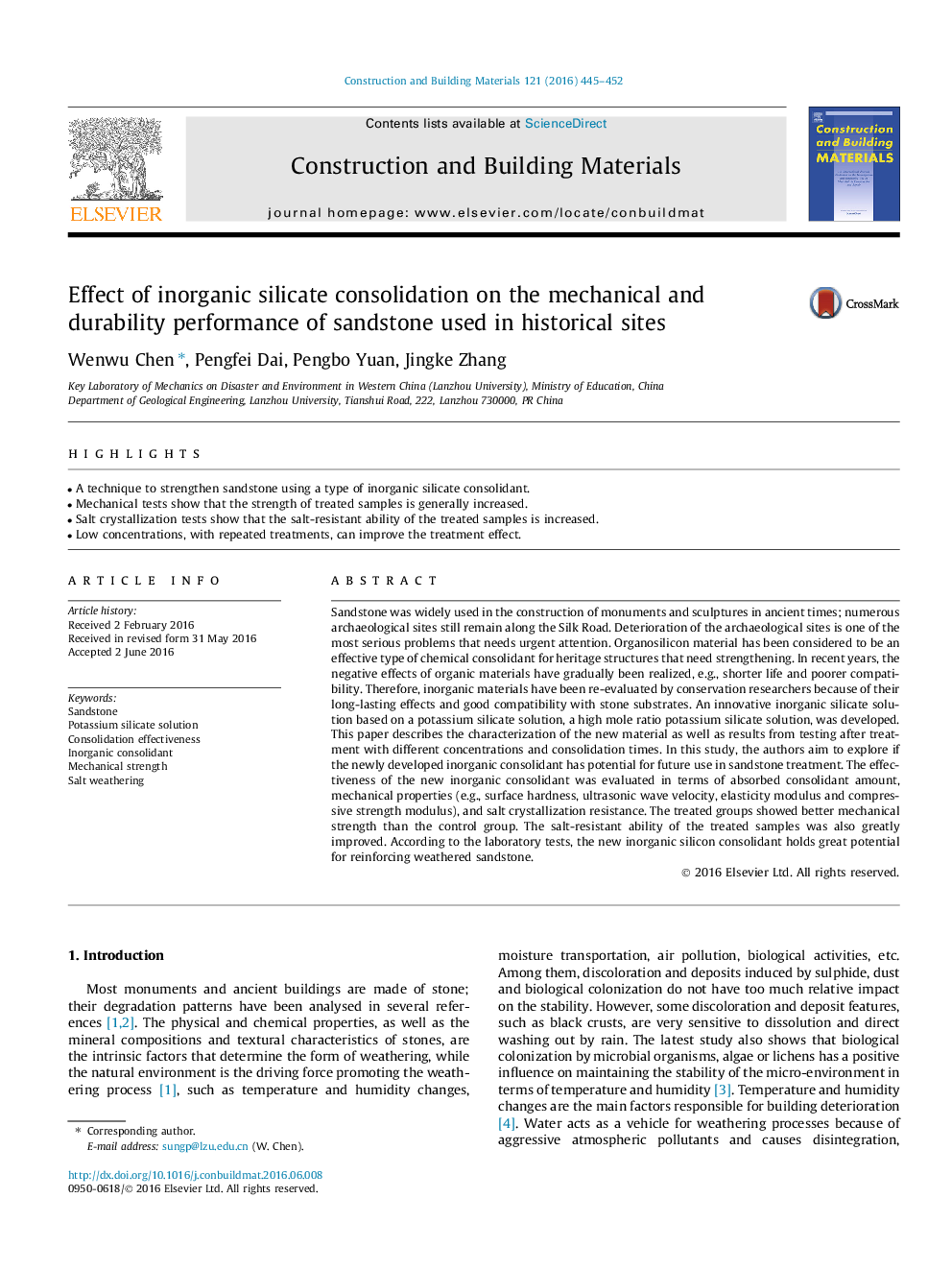| Article ID | Journal | Published Year | Pages | File Type |
|---|---|---|---|---|
| 6718551 | Construction and Building Materials | 2016 | 8 Pages |
Abstract
Sandstone was widely used in the construction of monuments and sculptures in ancient times; numerous archaeological sites still remain along the Silk Road. Deterioration of the archaeological sites is one of the most serious problems that needs urgent attention. Organosilicon material has been considered to be an effective type of chemical consolidant for heritage structures that need strengthening. In recent years, the negative effects of organic materials have gradually been realized, e.g., shorter life and poorer compatibility. Therefore, inorganic materials have been re-evaluated by conservation researchers because of their long-lasting effects and good compatibility with stone substrates. An innovative inorganic silicate solution based on a potassium silicate solution, a high mole ratio potassium silicate solution, was developed. This paper describes the characterization of the new material as well as results from testing after treatment with different concentrations and consolidation times. In this study, the authors aim to explore if the newly developed inorganic consolidant has potential for future use in sandstone treatment. The effectiveness of the new inorganic consolidant was evaluated in terms of absorbed consolidant amount, mechanical properties (e.g., surface hardness, ultrasonic wave velocity, elasticity modulus and compressive strength modulus), and salt crystallization resistance. The treated groups showed better mechanical strength than the control group. The salt-resistant ability of the treated samples was also greatly improved. According to the laboratory tests, the new inorganic silicon consolidant holds great potential for reinforcing weathered sandstone.
Related Topics
Physical Sciences and Engineering
Engineering
Civil and Structural Engineering
Authors
Wenwu Chen, Pengfei Dai, Pengbo Yuan, Jingke Zhang,
